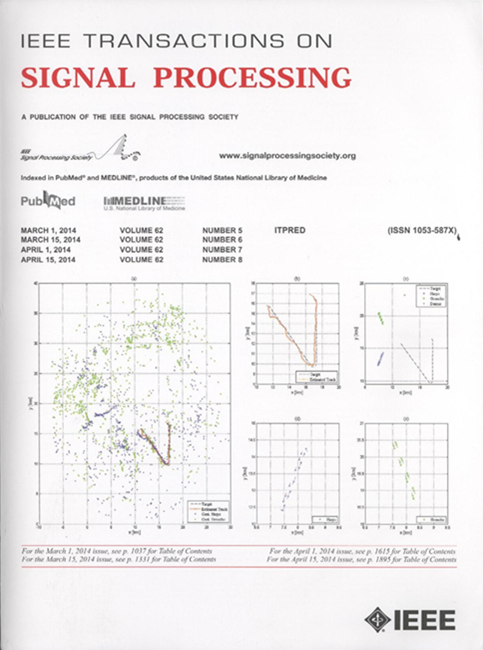Graph Fourier Transform Enhancement Through Envelope Extensions
IF 5.8
2区 工程技术
Q1 ENGINEERING, ELECTRICAL & ELECTRONIC
引用次数: 0
Abstract
Many real-world networks are characterized by directionality; however, the absence of an appropriate Fourier basis hinders the effective implementation of graph signal processing techniques. Inspired by discrete signal processing, where embedding a line digraph into a cycle digraph facilitates the powerful Discrete Fourier Transform (DFT) for signal analysis, addressing the structural complexities of general digraphs can help overcome the limitations of the Graph Fourier Transform (GFT) and unlock its potential. The DFT functions as a GFT for both cycle graphs and Cayley digraphs defined over the finite cyclic group通过包络扩展的图傅里叶变换增强
许多现实世界的网络都具有方向性;然而,缺乏适当的傅立叶基阻碍了图形信号处理技术的有效实现。受到离散信号处理的启发,其中将线有向图嵌入到循环有向图中有助于强大的离散傅立叶变换(DFT)进行信号分析,解决一般有向图的结构复杂性可以帮助克服图傅立叶变换(GFT)的局限性并释放其潜力。对于在有限循环群$\mathbb{Z}_{N}$上定义的循环图和Cayley有向图,DFT都是GFT函数。在这项工作中,我们提出了一个系统的框架来识别一类能够包含给定有向图的Cayley有向图。通过将原始的有向图嵌入到这样的Cayley有向图中,并采用本质上支持GFT的包络扩展,我们可以使用与扩展结构相关的GFT进行信号分析。在候选包络扩展中,通过选择满足一组预先指定的结构属性的包络扩展来实现最佳性能。所得到的GFT在数值上是稳定的,并提供了一个近似与原始有向图相关的邻接矩阵的特征结构的基础。证明了包络扩展具有一个卷积积,其GFT满足卷积定理。此外,移位不变图滤波器(系统)被描述为卷积算子,类似于经典情况。这允许利用系统进行信号分析。
本文章由计算机程序翻译,如有差异,请以英文原文为准。
求助全文
约1分钟内获得全文
求助全文
来源期刊

IEEE Transactions on Signal Processing
工程技术-工程:电子与电气
CiteScore
11.20
自引率
9.30%
发文量
310
审稿时长
3.0 months
期刊介绍:
The IEEE Transactions on Signal Processing covers novel theory, algorithms, performance analyses and applications of techniques for the processing, understanding, learning, retrieval, mining, and extraction of information from signals. The term “signal” includes, among others, audio, video, speech, image, communication, geophysical, sonar, radar, medical and musical signals. Examples of topics of interest include, but are not limited to, information processing and the theory and application of filtering, coding, transmitting, estimating, detecting, analyzing, recognizing, synthesizing, recording, and reproducing signals.
 求助内容:
求助内容: 应助结果提醒方式:
应助结果提醒方式:


